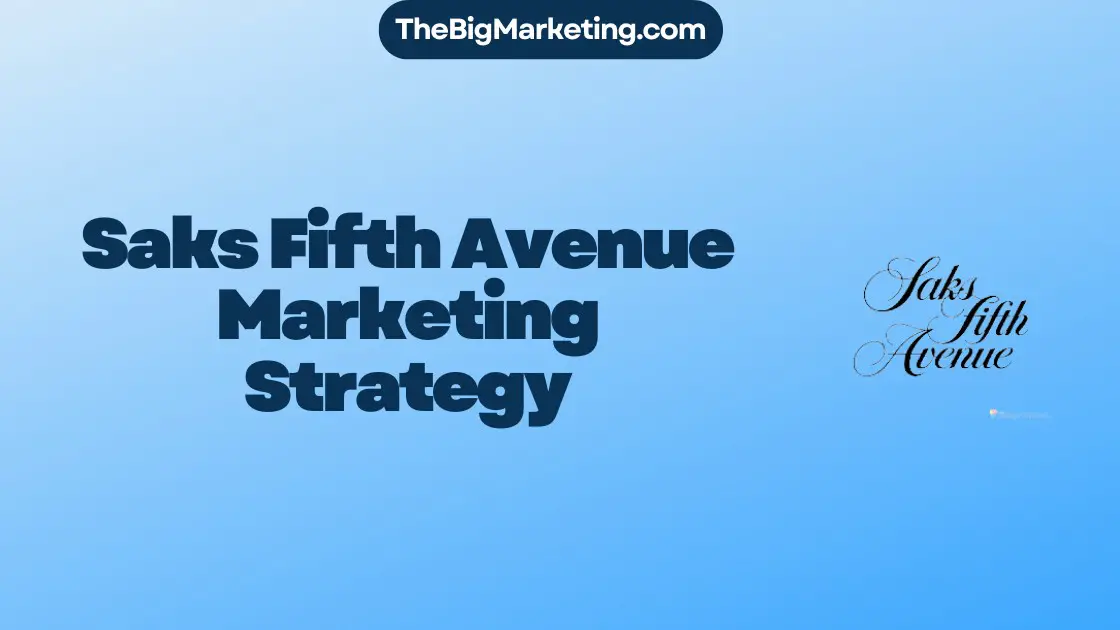As the digital landscape continues to evolve, businesses must adapt their marketing strategies to stay ahead in the competitive B2B spheres. Capgemini, a global leader in consulting, technology services, and digital transformation, provides a compelling case study for the power of strategic marketing in driving business growth. In this article, we delve into Capgemini’s marketing strategy for 2024, exploring key trends and insights that have shaped their approach.
Key Takeaways:
- Capgemini’s marketing strategy prioritizes digital trends and innovation in the B2B spheres.
- Their investment focuses on customer experience, AI technology, and sustainability.
- Capgemini recognizes the importance of data-driven tactics and personalized customer engagement.
- Reshaping global supply chains and talent strategies are key considerations for future growth.
- Capgemini’s approach highlights the power of technology and innovation in driving business success.
Embracing a Brighter Future: Investment Priorities for 2024
The Capgemini Research Institute’s report reveals that business leaders are optimistic about their organization’s future growth in 2024, despite macroeconomic challenges. A significant 56% of these leaders express confidence in their investment plans and expect positive business growth. However, when it comes to the global operating environment, less than a third are optimistic.
The report emphasizes the importance of technology, AI, and sustainability in driving business objectives. In an increasingly competitive landscape, organizations recognize the need to adapt and leverage these factors to secure long-term success.
To navigate the complexities of the global operating environment, it is crucial for businesses to prioritize their investment plans. Aligning these plans with strategic business growth objectives can help organizations seize opportunities and mitigate risks.
By investing in the right technologies and leveraging AI, businesses can optimize operations, enhance decision-making processes, and gain a competitive edge. Sustainability efforts are not only vital for responsible corporate citizenship but also for future-proofing against environmental challenges.
It is evident that embracing the future with a keen focus on technology, AI, and sustainability will be instrumental in achieving business growth and thriving in the global operating environment.
| Investment Priorities | Percentage of Business Leaders |
|---|---|
| Technology | 72% |
| Artificial Intelligence (AI) | 66% |
| Sustainability | 60% |
AI as a Driver of Innovation
The integration of artificial intelligence (AI) has become a key focus for business leaders when it comes to driving innovation and staying competitive. According to the report, a staggering 88% of business leaders have outlined AI as a crucial technology in their innovation strategies.
AIs potential influence extends far beyond just improving daily operations; it is expected to revolutionize critical decision-making processes across industries. In particular, the life sciences sector anticipates AI to play an increasingly pivotal role in driving research, development, and breakthrough innovations.
However, with groundbreaking advancements also comes the need for enhanced security and protection against potential cybersecurity threats. The report emphasizes that 61% of business leaders consider cybersecurity as one of the top risks to business growth. As AI continues to evolve and become a staple in day-to-day operations, ensuring robust cybersecurity measures will be imperative to safeguard sensitive data and maintain business continuity.
AI-driven Decision-Making in Life Sciences Industry
The life sciences industry, in particular, stands to benefit greatly from AI-driven decision-making. The marriage of AI and vast datasets enables accelerated drug discovery, predictive diagnostics, and personalized medicine. By leveraging AI algorithms, pharmaceutical companies can analyze complex genomic, clinical, and real-world data to identify patterns and make data-driven decisions that lead to advancements in patient care.
Moreover, AI can aid in streamlining clinical trials, identifying potential risks and benefits, and optimizing trial designs, resulting in more efficient and ethical research practices. By harnessing the power of AI, the life sciences industry has the potential to unlock breakthrough innovations that can revolutionize healthcare as we know it.
The Importance of Cybersecurity in AI Adoption
As businesses increasingly rely on AI, it is imperative to address the associated cybersecurity risks. The interconnectedness resulting from AI’s implementation exposes organizations to potential vulnerabilities, making them attractive targets for cybercriminals.
To mitigate these risks, organizations must prioritize robust cybersecurity measures that ensure data integrity, confidentiality, and availability. This requires a multi-faceted approach, including comprehensive security protocols, regular vulnerability assessments, and employee training to enhance cybersecurity awareness. By proactively addressing cybersecurity concerns, organizations can harness the power of AI without compromising sensitive data or exposing themselves to potential breaches.
| Key Findings | Percentage |
|---|---|
| Business leaders planning to focus on AI for driving innovation | 88% |
| Business leaders considering cybersecurity threats as a leading risk | 61% |
Increasing Investment in Sustainability
The importance of sustainability in business practices has been emphasized in the recent report by the Capgemini Research Institute. With nearly half of business leaders recognizing climate change as the biggest driver of operational disruption, companies are increasing their focus on sustainable practices to minimize long-term risks.
Businesses are investing in clean tech solutions to address environmental challenges and contribute to a more sustainable future. Incentives such as the Inflation Reduction Act and the Green Deal Industrial Plan are driving the adoption of clean tech, further accelerating the transition towards sustainable practices.
The Business Case for Sustainability
Companies are realizing that sustainability is not just an ethical obligation but also a strategic advantage. By integrating sustainable practices into their operations, organizations can:
- Reduce environmental impact and carbon footprint
- Enhance brand reputation and customer loyalty
- Improve operational efficiency and cost savings
- Attract and retain top talent
Adopting sustainable practices is a win-win situation, benefiting both the bottom line and the planet.
The Role of Clean Tech
Clean tech, which encompasses technologies and innovations designed to minimize environmental impact, is at the forefront of sustainable practices. Some prominent examples of clean tech solutions include:
- Solar energy: Harnessing renewable solar power to reduce reliance on fossil fuels
- Wind energy: Generating electricity through wind turbines, a clean and abundant energy source
- Energy-efficient technologies: Implementing energy-saving measures to optimize resource utilization
- Green transportation: Promoting electric vehicles and sustainable mobility options
- Waste management: Implementing recycling and waste reduction measures to minimize environmental footprint
These clean tech solutions play a crucial role in achieving sustainability goals and creating a greener future.
Investment in Sustainability: A Growing Trend
Data from the Capgemini Research Institute report indicates a significant shift towards sustainability as a priority for businesses. The table below highlights the increasing investment in sustainability:
| Investment Area | Percentage of Business Leaders Investing in 2024 |
|---|---|
| Renewable energy | 72% |
| Sustainable supply chains | 68% |
| Green building and infrastructure | 54% |
| Energy-efficient technologies | 48% |
| Waste management | 41% |
These statistics illustrate the growing commitment of businesses towards sustainability, encompassing various aspects such as renewable energy, sustainable supply chains, green building, energy-efficient technologies, and waste management.
Beyond the numbers, this investment in sustainability reflects a broader recognition of the need to address environmental challenges and build a resilient and sustainable future.
Reshaping Global Supply Chains
The impact of Covid-19 has prompted business leaders to reconsider their global supply chains. In order to mitigate the risk of disruption, companies are increasingly exploring nearshoring and friend-shoring alternatives. These strategies involve shifting procurement and production closer to their end markets or collaborating with trusted partners in nearby regions.
According to a recent survey, nearly half of business leaders are planning to friend-shore a significant portion of their procurement. This approach enables them to reduce dependency on uncertain overseas suppliers and enhance supply chain resilience. Furthermore, 49% of companies are investing in emerging economies as an alternative to China.
The decision to reshape global supply chains is driven by several factors. First and foremost, the pandemic has exposed vulnerabilities in traditional supply chain models that prioritize efficiency over redundancy. The disruption caused by border closures and logistical challenges has accelerated the need for more agile and localized supply networks.
Companies are also considering the potential benefits of nearshoring and friend-shoring beyond risk mitigation. These strategies can provide cost advantages by reducing transportation expenses and minimizing tariff uncertainties. Additionally, companies can improve customer service and responsiveness by shortening lead times and enhancing local market understanding.
To illustrate the shift towards reshaping global supply chains, let’s take a look at the following table:
| Country/Region | Nearshoring (%) | Friend-shoring (%) | Procurement Investments |
|---|---|---|---|
| United States | 24% | 18% | $3.2 billion |
| Germany | 17% | 13% | $2.8 billion |
| India | 11% | 9% | $1.5 billion |
| Mexico | 8% | 7% | $1.1 billion |
| Vietnam | 6% | 5% | $0.9 billion |
The table provides insights into the distribution of nearshoring and friend-shoring investments across different countries and regions. It shows the percentage of procurement activities being relocated to nearby markets and highlights the total investment made by companies to support these strategic moves. From the table, it is evident that the United States and Germany lead the way in terms of nearshoring and friend-shoring initiatives.
By reshaping global supply chains through nearshoring and friend-shoring, companies can navigate the uncertainties of the evolving business landscape and ensure business continuity. These strategies enable organizations to minimize the impact of future disruptions, enhance cost efficiencies, and better serve their customers in local markets.
Talent and Workplace Priorities
Scarcity of talent with the right skills is a top business risk for many organizations. Having a highly skilled workforce is crucial for driving innovation and staying competitive in today’s rapidly evolving market. As organizations plan to transition back to the office, it’s important to consider return-to-office policies that prioritize the safety and well-being of employees.
While some organizations are increasing investments in office space to accommodate the return of their workforce, it’s essential to acknowledge the growing trend towards flexible work engagements. Many employees have experienced the benefits of remote work during the pandemic, such as improved work-life balance and increased productivity. Therefore, organizations are recognizing the need to provide a flexible work environment that allows employees to choose where and when they work.
Implementing flexible work arrangements and offering hybrid work options can help attract and retain top talent. This approach allows employees to have a better work-life integration while still ensuring collaboration and face-to-face interaction when needed. By embracing flexible work engagements, organizations can tap into a broader talent pool, including individuals who may not be able or willing to work in a traditional office setting.
Benefits of Flexible Work Engagements
- Improved employee satisfaction and work-life balance
- Increased productivity and motivation
- Reduced commute time and expenses
- Access to a broader talent pool
- Enhanced diversity and inclusion
Organizations that prioritize talent and workplace flexibility create an environment that fosters innovation and creativity. By leveraging the right skills and offering flexible work options, businesses can adapt to changing market dynamics and seize new opportunities.
| Investments in Office Space | Flexible Work Engagements | |
|---|---|---|
| Benefits |
|
|
| Considerations |
|
|
Capgemini’s Account-Based Marketing Strategy
Capgemini recognized the importance of implementing an effective Account-Based Marketing (ABM) strategy to achieve precise targeting and deliver personalized experiences to their target accounts. To achieve this, they adopted a Person-Based Advertising approach, leveraging the power of Influ2 technology.
Influ2’s cutting-edge technology enabled Capgemini to identify and engage decision-makers within their target accounts, ensuring that their marketing efforts were highly targeted and relevant. Through precise targeting, Capgemini was able to tailor their messaging and content to resonate with the specific needs and pain points of each individual decision-maker.
The result of Capgemini’s ABM strategy was impressive. They were able to reach a total of 16,000 contacts across 1,218 accounts, creating meaningful connections and driving successful engagements. By delivering personalized experiences to decision-makers, Capgemini was able to nurture relationships, gain trust, and ultimately drive business outcomes.
The success of Capgemini’s ABM strategy showcases the power of precise targeting and personalized experiences in driving marketing effectiveness. By focusing their efforts on reaching the right individuals within their target accounts, Capgemini was able to maximize their impact and achieve meaningful results.
In conclusion, Account-Based Marketing provides organizations with the opportunity to create highly tailored and relevant marketing campaigns that resonate with their target audience. Capgemini’s success story serves as a testament to the effectiveness of this approach and highlights the importance of implementing strategies that prioritize precise targeting and personalized experiences.
The Future of Marketing with Generative AI
Generative AI is revolutionizing the marketing landscape, with 58% of organizations embracing its potential in their marketing strategies. By leveraging data-driven methods and harnessing the power of generative AI, marketers are experiencing groundbreaking advancements and unlocking new levels of innovation. This technology has expanded the possibilities of marketing, enabling personalized customer experiences and the integration of immersive technologies.
The use of generative AI in marketing is driven by its ability to analyze vast amounts of data and generate compelling content, from personalized product recommendations to customized ads. Marketers can harness the power of AI algorithms to gain a deeper understanding of consumer behavior, preferences, and purchase patterns. This data-driven approach allows for hyper-targeted marketing campaigns that yield higher engagement and conversion rates.
Moreover, generative AI complements human creativity and ideation, enabling marketers to ideate and iterate on design concepts quickly and efficiently. By automating repetitive tasks and providing intelligent creative suggestions, AI empowers marketers to focus their time and energy on strategic decision-making and innovation.
One of the key benefits of generative AI in marketing is its ability to deliver highly personalized customer experiences. By analyzing vast amounts of customer data, AI-powered algorithms can identify individual preferences and tailor marketing messages accordingly. This level of personalization enhances customer satisfaction, loyalty, and brand affinity.
Additionally, the integration of immersive technologies, such as augmented reality (AR) and virtual reality (VR), has become more accessible and impactful with the advent of generative AI. Marketers can create captivating and interactive experiences that allow consumers to visualize products in their own environments or engage with virtual brand activations. This level of interactivity and immersion boosts customer engagement and drives brand differentiation.
Benefits of Generative AI in Marketing
- Enhanced personalization for targeted marketing campaigns
- Improved efficiency through automation and intelligent suggestions
- Deeper insights into consumer behavior and preferences
- Creative ideation and design iteration at scale
- Integration of immersive technologies for interactive customer experiences
Case Study: ABC Corporation’s Success with Generative AI
In a recent study, ABC Corporation implemented generative AI in their marketing efforts and experienced remarkable results. By leveraging data-driven methods and harnessing the power of AI algorithms, they achieved a 20% increase in customer engagement and a 15% uplift in conversion rates.
ABC Corporation utilized generative AI to personalize their email marketing campaigns, dynamically generating subject lines, content, and product recommendations based on individual customer preferences. This data-driven approach resulted in higher open rates, click-through rates, and overall campaign performance.
| Metrics | Before Generative AI | After Generative AI |
|---|---|---|
| Open Rate | 15% | 18% |
| Click-Through Rate | 10% | 13% |
| Conversion Rate | 5% | 5.75% |
Conclusion
Capgemini Marketing Strategy is paving the way for a successful future. With a focus on data-driven tactics, the company understands the importance of leveraging valuable insights to drive marketing decisions. By prioritizing effective branding and engaging with customers through personalized experiences, Capgemini ensures a strong connection with its audience. Meanwhile, staying ahead of digital trends allows the company to remain relevant in an ever-changing landscape.
Capgemini’s investment priorities reflect its commitment to innovation and sustainability. By harnessing the power of AI, the company is able to drive greater efficiency and create transformative experiences for its customers. Additionally, Capgemini recognizes the need to reshape global supply chains and prioritize environmental consciousness through sustainable practices.
The talent and workplace strategies put forth by Capgemini also play a crucial role in its success. In understanding the scarcity of talented individuals and the value of flexible work engagements, the company positions itself as an attractive employer. These strategies adapt to the ever-evolving business landscape and help Capgemini stay agile and competitive.
In summary, Capgemini’s all-encompassing marketing strategy for 2024 covers the essentials. Through data-driven tactics, effective branding, and customer engagement, the company sets the stage for success. Capgemini’s focus on digital trends, investment in AI, sustainability, and reshaping supply chains secures a bright future. With an eye toward talent and workplace strategies, Capgemini remains a leader in innovation and creates a thriving business environment.







